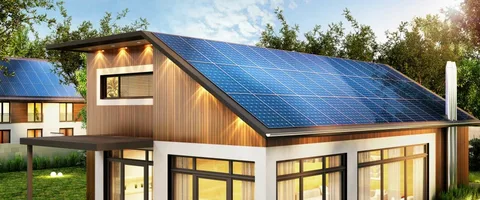As more homeowners look for sustainable and cost-effective ways to power their homes, solar energy has become an increasingly popular option. If you’re new to the concept, this article will serve as A Beginner’s Guide to Home Solar Power System, breaking down the basics to help you understand how these systems work, their benefits, and what to consider before installation.
What is a Home Solar Power System?
A home solar power system captures sunlight and converts it into electricity that can be used to power your household appliances and lighting. This system typically includes solar panels, an inverter, batteries (optional), and a monitoring system. The panels absorb sunlight, and the inverter converts the captured energy into usable electricity.
Benefits of Installing a Solar Power System at Home
There are several advantages to switching to solar power:
- Cost Savings: Solar panels can significantly reduce or even eliminate your electricity bills.
- Environmental Impact: Solar energy is renewable and clean, reducing your carbon footprint.
- Energy Independence: You rely less on the grid, protecting yourself against rising energy costs and outages.
- Increased Home Value: Solar systems can add value to your property.
Components of a Home Solar Power System
Understanding the main parts of a solar power system is essential for any beginner:
- Solar Panels: The core element that captures sunlight.
- Inverter: Converts solar energy from DC to AC power.
- Battery Storage: Stores excess energy for use when sunlight is unavailable.
- Charge Controller: Manages battery charging and prevents overcharging.
- Monitoring System: Tracks your energy production and consumption.
How to Choose the Right Solar System for Your Home
When considering solar energy, it’s important to assess your home’s energy needs, location, and budget. Here are some key factors:
- Energy Consumption: Calculate your average energy use to determine system size.
- Roof Space and Orientation: South-facing roofs with minimal shade are ideal.
- Budget and Incentives: Look into government incentives, rebates, and financing options.
- Installer Reputation: Choose a certified and experienced installer.
Steps to Installing Your Home Solar Power System
- Site Assessment: A professional evaluates your home’s solar potential.
- System Design: Customized design based on your needs.
- Permitting and Paperwork: Securing necessary approvals.
- Installation: Panels and equipment are installed.
- Inspection and Activation: Final checks and system activation.
Maintenance Tips for Your Solar Power System
Solar systems require minimal maintenance but regular checks help ensure efficiency:
- Clean panels periodically.
- Monitor system performance.
- Check for shading or damage.
Conclusion
If you’re looking for a reliable and eco-friendly way to power your home, A Beginner’s Guide to Home Solar Power Systems shows that adopting solar energy is easier than ever. By understanding how these systems work and what to consider before installation, you can make an informed decision to embrace renewable energy and enjoy long-term savings.


